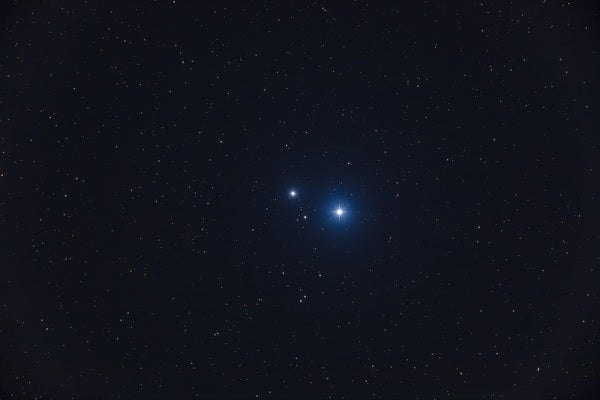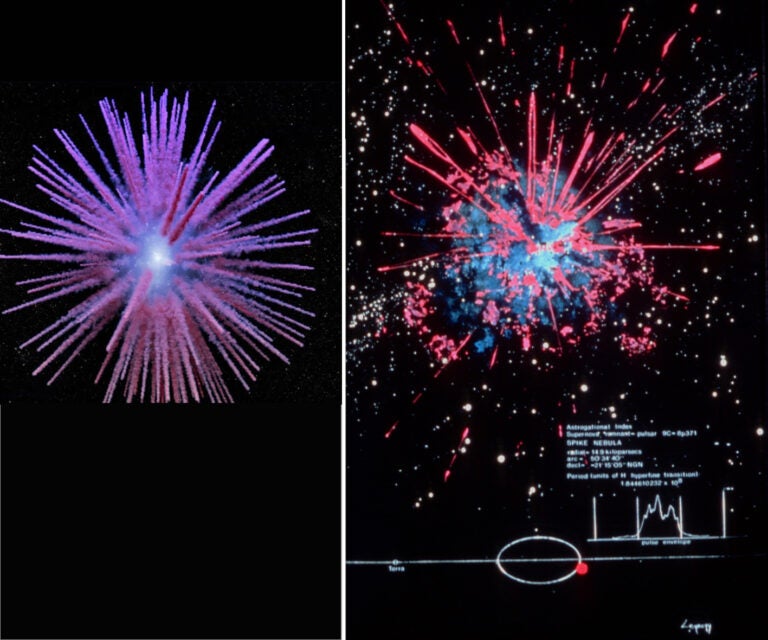For most people living in the Northern Hemisphere, the first double star we notice is Mizar (Zeta [ζ] Ursae Majoris), the middle star in the Big Dipper’s handle. Located just to the northeast is Mizar’s faint cohort, Alcor (80 Ursae Majoris). Mizar shines at magnitude 2.3, while Alcor is magnitude 4. The pair are separated by 11.8′, which is resolvable with the unaided eye if the sky is dark enough and your eyesight is good enough. In ancient times, some cultures even used these stars as a test of visual acuity.
Alcor and Mizar are not true physical companions, however. Alcor is 82 light-years away, while Mizar is 83 light-years distant. That’s close, but not close enough to form a true binary star. They do, however, share a common direction and speed through our galaxy. Both Alcor and Mizar, as well as the Dipper stars Merak (Beta [β] Ursae Majoris), Phecda (Gamma [γ] Ursae Majoris), and Megrez (Delta [δ] Ursae Majoris) — and about 100 others — form a loose star cluster called the Ursa Major Moving Group.
Although Alcor is not Mizar’s real partner, one look at Mizar through a telescope will reveal it as a binary star, a fact discovered by Italian astronomer Giovanni Riccioli in 1650. Studies have since shown that Mizar A and Mizar B are both binaries themselves, bringing the total star count of the Mizar system to four. Alcor is a binary system, too, accompanied by a 9th-magnitude red dwarf partner set just 1″ away.
Through a telescope, you might also notice a faint star forming a broad triangle with Alcor and Mizar. In 1722, German mathematician Johann Liebknecht thought he saw that star move against the background from one night to the next. He concluded that it was a new planet. In his excitement, he christened it Sidus Ludoviciana (Ludwig’s Star) after Ludwig V, then the king of Germany. Liebknecht was mistaken, but the star still retains that name.
Make sure to explore Astronomy’s full list of 101 cosmic objects you must see. New entries will be added each week throughout 2022.
To get the latest astronomical news and observing content delivered directly to your door, subscribe to Astronomy magazine today!










